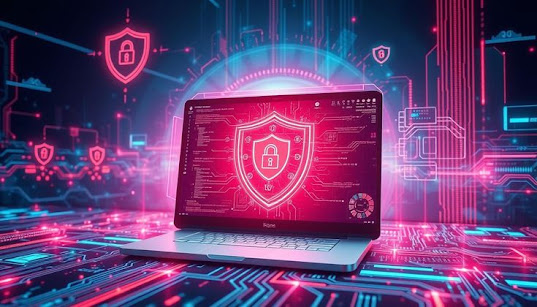AI vs. AI in Cybersecurity: The Battle of Machine Minds (2025)
AI vs. AI in Cybersecurity: The Battle of Machine Minds (2025)
In today’s fast-evolving digital age, cybersecurity has reached a critical tipping point. The battleground is no longer dominated by human hackers versus human defenders. Instead, it has transformed into a high-stakes contest between artificial intelligence systems on both sides. In 2025, the phrase "AI vs. AI in Cybersecurity" is no longer speculative—it’s a present-day reality. On one end, cybercriminals are employing advanced generative AI and machine learning algorithms to penetrate systems, while on the other, organizations are deploying equally intelligent, adaptive AI-based security solutions to stop them. This silent war between two types of machine intelligence has brought about a paradigm shift in how we think about data protection, threat detection, and cyber defense.
The evolution of offensive AI has led to a massive surge in the number, speed, and complexity of cyberattacks. AI-powered malware is capable of learning from failed attacks and updating itself autonomously to bypass firewalls and antivirus software. This self-improving nature of malicious AI makes it extraordinarily dangerous. One of the most common yet terrifying tools of 2025 is polymorphic malware, which changes its code structure each time it infects a new system, making detection through traditional means almost impossible. These AI-driven programs can scan target environments, identify weaknesses, and adjust their behavior in real-time to exploit those vulnerabilities.
Phishing campaigns, too, have grown far more sophisticated. Instead of relying on generic scam messages, attackers now use large language models (LLMs) to craft emails that closely mimic the tone, vocabulary, and communication style of specific individuals. These AI-generated messages are context-aware and personalized, making them far more effective at deceiving recipients. In some cases, deepfake audio and video technologies are also used to impersonate executives, leading to devastating social engineering attacks.
Meanwhile, the rise of defensive AI has given cybersecurity professionals a powerful tool to combat these new threats. AI-based security systems now monitor vast networks, process terabytes of data per second, and detect anomalies in real-time. These systems leverage machine learning to understand normal behavior and flag any deviations that could indicate malicious activity. Unlike traditional security tools that depend on known signatures or manual rule setting, modern AI tools are predictive and adaptive.
For example, reinforcement learning models are widely used in cybersecurity today. These models learn optimal strategies by interacting with the environment and receiving feedback from their actions. A defensive AI might simulate thousands of attack scenarios, learning from each attempt to improve its detection and response mechanisms. These systems don’t just react—they proactively hunt for threats, much like an intelligent immune system.
The interplay between offensive and defensive AI has created a constantly shifting battlefield. It’s a game of chess where both players are machines that learn, adapt, and evolve. Offensive AI may initiate an attack by launching a worm that learns the target network’s structure, mimics user behavior, and avoids detection. In response, the defensive AI identifies subtle anomalies in user activity, isolates the affected system, and patches the vulnerability—all without human intervention. What makes this dynamic so unique is that both systems improve through continuous interaction, making each encounter more complex than the last.
Another significant development in 2025 is the use of AI in vulnerability discovery. Attackers deploy machine learning models to scan open-source code, web applications, and software platforms for undiscovered weaknesses. These models can identify patterns in code that hint at potential exploits and even generate proof-of-concept attacks automatically. This has significantly shortened the time between vulnerability discovery and exploitation, leaving organizations with a very narrow window to respond.
On the defensive side, companies are leveraging similar models to find and fix vulnerabilities before attackers can exploit them. AI can analyze historical bug reports, patch data, and code commits to predict where new vulnerabilities might exist. By automating the detection and remediation processes, organizations can maintain a much higher level of security. Additionally, some systems are now capable of auto-patching software in real-time, reducing the reliance on manual intervention.
Threat intelligence has also undergone a revolutionary transformation with the integration of AI. Traditional threat intelligence relied heavily on manually gathered data from known sources. In contrast, AI-driven threat intelligence systems use natural language processing (NLP) to scan dark web forums, social media platforms, code repositories, and hacker channels to identify emerging threats. These systems can read and interpret slang, context, and sentiment, providing security teams with early warnings of possible attacks.
Moreover, federated learning models allow multiple organizations to collaborate on training AI systems without sharing sensitive data. This distributed approach enables global threat detection and defense capabilities while maintaining privacy. For example, banks in different countries can train a shared AI model to detect fraud without ever exchanging customer data, thanks to this secure collaborative learning method.
However, the rise of AI in cybersecurity also brings a host of ethical and operational challenges. One pressing issue is the transparency of AI decision-making. Many AI systems, particularly those using deep learning, operate as black boxes. When a system flags an activity as malicious, it may be difficult to understand why. In critical sectors like healthcare, finance, or military defense, such opacity is unacceptable. As a result, there is growing demand for explainable AI (XAI), which provides clear reasoning for each decision.
Bias in AI is another major concern. If a cybersecurity AI is trained on biased data, it may overlook certain threats or falsely accuse innocent behavior as malicious. This could result in discrimination, service disruptions, or even legal liabilities. To mitigate these risks, cybersecurity professionals must ensure that training data is diverse, representative, and constantly updated.
The issue of accountability also arises. When an AI system autonomously takes action—such as shutting down servers, blocking users, or deleting files—who is responsible for the consequences? Clear governance policies, audit trails, and human oversight are necessary to manage these systems responsibly.
Looking ahead, the future of AI in cybersecurity will depend on how well we integrate technology, policy, and human expertise. To defend effectively against AI-powered attacks, organizations must adopt a zero-trust architecture that assumes no entity—internal or external—should be automatically trusted. All access must be verified, monitored, and logged. AI plays a critical role in enforcing zero-trust principles by continuously analyzing behavior and adjusting access controls accordingly.
Security teams must also receive specialized training to work with AI systems. Understanding how these models function, what data they require, and how to interpret their outputs is essential for effective deployment. Organizations should consider building hybrid teams of cybersecurity experts, data scientists, and AI engineers.
Red teaming with AI is becoming a best practice. In this approach, organizations use offensive AI to simulate cyberattacks against their own systems. By doing so, they can identify weaknesses and improve their defenses in a controlled environment. This proactive testing is essential in a world where attacks can emerge and evolve within minutes.
Ultimately, the AI vs. AI battle in cybersecurity is here to stay. It will define how secure—or vulnerable—our digital infrastructure remains in the coming years. Companies, governments, and individuals must accept that traditional methods are no longer sufficient. Embracing AI-powered defenses, fostering ethical AI practices, and encouraging cross-sector collaboration are the keys to staying ahead in this never-ending cyber arms race.
In conclusion, as artificial intelligence becomes both a weapon and a shield in the world of cybersecurity, the question is not whether AI will be involved in cyber defense, but how intelligently we can wield it. The side that innovates faster, learns deeper, and acts smarter will win. But even more importantly, the side that does so ethically and transparently will sustain its defense in the long run. In 2025, the digital battlefield is silent, swift, and smart. Welcome to the age of machine minds.




Comments
Post a Comment